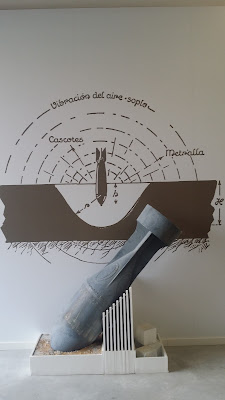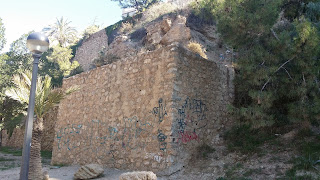

In April of this year a plaque was unveiled in Cardiff, organised by the International Bridages Memorial Trust, to a hero of the Civil War - Archibald Dixon.
On March 29 1939 tens of thousands of Republicans assembled on the dock side at Alicante, the last City to fall to Franco, in the hope of evacuation. The evacuation never came, partly due to a blockade by Italian destroyers and partly due to the connivance of the British Government. One ship made it through. The Stanbrook. Due to collect saffron and oranges, Dixon instead chose to overload his ship with 2,638 refugees from the fascists on a vessel just 230 feet long. It was an incredibly brave thing to do. Despite attacks from fascist planes, and listing badly, the Stanbrook made it to Algeria after 22 hours. The French Colonial authorities refused permission to disembark and Dixon had to negotiate for the women, children, elderly and disabled to leave. The men would reamin for over a month with many ending up in concentration camps. Those left behind in Alicante were either murdered or taken to the concentration camp at Los Almendros and later the labour camp at San Isidro. Dixon himself was killed some months later when his ship was torpedoed by a U boat. Although he now rightly has a plaque in Cardiff thanks to the IBMT there is nothing to mark the events of the 29th March 1939 on the dockside at Alicante. Only luxury yachts. That is a scandal that needs to be rectfied and the local campaigners deserve our support in their campaign for a memorial in Alicante.



 For so long the Spanish Civil War has been buried away in Alicante despite the Cities extraordinary suffering both during and after the conflict and its strategic significance as the last place to fall to the fascist forces. In this blog I have looked at the memorial to the bombing of Alicante market and the barely visible signage marking the Los Almendros concentration camp. The fight for a memorial to the many thousands who suffered, and the many who died, on the dockside awaiting rescue by ships that, with the exception of the Stanbrook, never came, rages on. So you can imagine how pleased I was to hear that at last a museum was being opened in the old fire station opposite the newly opened air-raid shelter uncovered under the old bus station. The main aim of the museum is to capture the terror of the repeated fascist bombing raids on the City as Hitler and Mussolini tested the tactics that would later be unleashed across Europe. There are interviews on big screens with elderly residents who remember the bombings along with an evocative selection of exhibit pieces and well thought through graphics. One small item that struck me hard was a copy of the decree issued after the fall of the City banning communist, socialist, anarchist and trade union organisations. If you are visiting Alicante don's miss the museum and the neighbouring shelter. I just hope there is more to come as this City at last begins to give up its secrets.
For so long the Spanish Civil War has been buried away in Alicante despite the Cities extraordinary suffering both during and after the conflict and its strategic significance as the last place to fall to the fascist forces. In this blog I have looked at the memorial to the bombing of Alicante market and the barely visible signage marking the Los Almendros concentration camp. The fight for a memorial to the many thousands who suffered, and the many who died, on the dockside awaiting rescue by ships that, with the exception of the Stanbrook, never came, rages on. So you can imagine how pleased I was to hear that at last a museum was being opened in the old fire station opposite the newly opened air-raid shelter uncovered under the old bus station. The main aim of the museum is to capture the terror of the repeated fascist bombing raids on the City as Hitler and Mussolini tested the tactics that would later be unleashed across Europe. There are interviews on big screens with elderly residents who remember the bombings along with an evocative selection of exhibit pieces and well thought through graphics. One small item that struck me hard was a copy of the decree issued after the fall of the City banning communist, socialist, anarchist and trade union organisations. If you are visiting Alicante don's miss the museum and the neighbouring shelter. I just hope there is more to come as this City at last begins to give up its secrets.
























